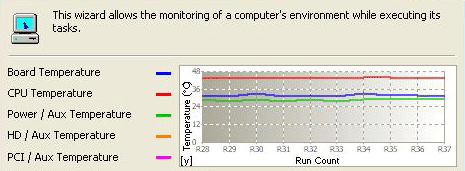Pentium D 820 and i945G/P Chipset Showcase
Intel Pentium D 820: CPU-Z Info & Overclocking
 |
|
To get a closer look at the internals of the Pentium D 820, we loaded the latest version of CPU-Z for more details. As you can see, the processor is based on the "SmithField" core, clocked at 2.8GHz (14x200) and is manufactured using a 90nm process. Other than that, there is nothing we didn't expect to see here. Upon inspection of the cache details, we see the L2 cache reported as 1024KB because CPU-Z is reporting its information on a per-core basis.
Next, we wanted to see what kind of overclocking potential the processor had. Because our Intel reference board doesn't support overclocking, we used the new Gigabyte GA-8I945P-G motherboard based on the Intel 945P chipset. We will be reviewing this board soon, but for now we're focusing in the Pentium D 820's overclocking potential.
Focusing on the CPU, we locked the memory below its peak and then raised the FSB until the system became unresponsive. In the end, we found the peak setting to be a 255MHz FSB, pushing the CPU from 2.8GHz to 3.57GHz. This resulted in an increase of 770MHz or 27.5% with stock cooling. This was a fairly impressive turn out for the Pentium D 820, which ran SANDRA's CPU Burn-In test for 60 minutes straight without a hitch.
Continuing our testing with the Intel D945GTPLR system board, we ran a few thermal readings on the chip at stock speeds to show running temperatures when running at idle and 100% CPU utilization. With no load being applied to the Pentium D 820, the CPU ran at a steady 43C.
 Pentium D 820 (2.8GHz) - No Load Thermal Readings |
 Pentium D 820 (2.8GHz) - 100% CPU Load Thermal Readings |
Next, we added 100% load by running Prime 95 for almost three hours and found that the system stabilized at an even 63C. Not bad for a pair of Prescott cores under the hood, but certainly thermals are a lot more manageable at 2.8GHz.







